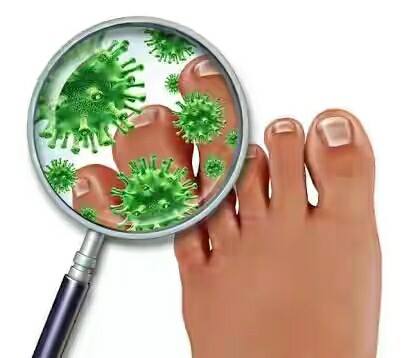Fungal Infection
A jock with athlete’s foot. A baby with thrush. A woman with a vaginal yeast infection. All three people have fallen prey to a fungal infection, which can occur in several places on our bodies.
Fungi are microorganisms characterized by a substance in their cell wall called chitin.
Some fungi, like many types of mushrooms, are edible. Others, like aspergillus, can be extremely dangerous when they infect our bodies and lead to life-threatening diseases. In between are many other types of fungi that are capable of causing infections in our lungs, skin and nails.
Types of Fungal Infection
A fungal infection is also known as mycosis. Although most fungi are harmless to humans, some of them are capable of causing disease under specific conditions.
Fungi reproduce by releasing spores that can be picked up by direct contact or even inhaled. That’s why fungal infections often affect the lungs, skin, or nails.
Fungi can also penetrate the skin to affect your organs and cause a whole body systemic infection. Some common fungal infections include:
Athlete’s Foot
Some fungi, called dermatophytes, thrive in the warm and humid area between the toes and particularly common among athletes. Athlete’s foot causes itching, scaling, peeling, or cracking of the skin.
Jock Itch
Dermatophytes can also affect the groin area, producing an itchy fungal skin infection. It’s mostly a problem for men and boys, but women can suffer from the infection too.
Ringworm
Ringworm is a fungal infection that typically affects the skin and scalp. It usually starts as a reddish, itchy, and scaly rash. Over time, it gets larger and forms a red ring.
What Causes Fungal Infections?
Fungal infections are contagious and can spread from one person to another. But humans do have protections against fungi. For one, almost every part of the human body has non-disease causing bacteria that protect us from fungal infections. These bacteria deprive harmful fungi of space and nutrients, thereby keeping them in check. Secondly, even if fungi do manage to colonize the skin, the body’s immune system can often fight them off. High acidity levels in some environments such as the vagina provide another layer of protection.
But not all of the body’s defense mechanisms are infallible. In patients who are immune-suppressed for example, the immune system is unable to fight fungal infection adequately. In addition, prolonged use of antibiotics destroys both helpful bacteria, allowing fungi to colonize the skin and mucous. In postmenopausal women, hormonal changes reduce the acidity of their vagina, making them more vulnerable to vaginal yeast infections.
How Are Fungal Infections Treated?
Fungal infections are treated with a variety of antifungal drugs. The type you use depends on where the infection is located and how severe it is.
For superficial skin infections, you may use an antifungal cream, drops, or ointment. More serious infections, including those affecting the fingernails may require oral tablets or injections Treatment of fingernail infections can take weeks, but infections in the toenails may take months to clear.
Vaginal infections are usually treated with suppositories.
Many anti-fungal medications are toxic to the liver so patients need to be carefully monitored.
Some doctors may recommend alternative therapies. You may be advised to increase your consumption of garlic, a natural anti-fungal. You may also be told to boost your intake of vitamin C and essential fatty acids, which boost the immune system. In addition, you may be told to lower your intake of sugar.
Probiotics, such as Lactobacillus acidophilus, are a relatively recent development. As their name suggests, probiotics provide good bacteria that help restore the body’s balance and compete with fungi for colonization.
(If You Are Suffering With Any Skin Problem . We’ll Solve It In-Shaa-Allah ![]() Information/ Appointment Call On this Number 00923215667849)
Information/ Appointment Call On this Number 00923215667849)
